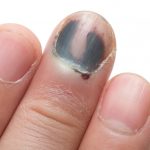
Millions of American smokers suffer from a potentially serious lung disease that’s not technically chronic obstructive pulmonary disease (COPD), a new study finds. They would benefit from a clear diagnosis, though, and the new findings demonstrate a major gap in care for people with a history of tobacco use, the researchers said. Among folks who smoked at least one pack of cigarettes a day for 20 or more years, half had persistently high respiratory symptoms, including shortness of breath, daily cough and phlegm, and decreased ability to exercise, although they did well in the breathing tests used to spot COPD. The researchers call the condition “tobacco exposure preserved spirometry” (TEPS). “We first described TEPS in 2016. What we’re showing here is the long-term follow up, and it’s not like an early COPD. It stays persistent the way it is over time,” said lead researcher Dr. Prescott Woodruff, division chief of pulmonology at the University of California, San Francisco. Right now, there is no treatment for TEPS, he said. “It does improve in many people when they stop smoking, but not everyone,” Woodruff said. Woodruff’s team tried treating patients with bronchodilators used to treat COPD. The drugs improved lung function but not the symptoms, he said. “TEPS may be due to abnormal mucus production, so therapies that could control mucus might be the best therapies,” Woodruff… read on > read on >





























-300x200.jpg)







-300x169.jpg)
